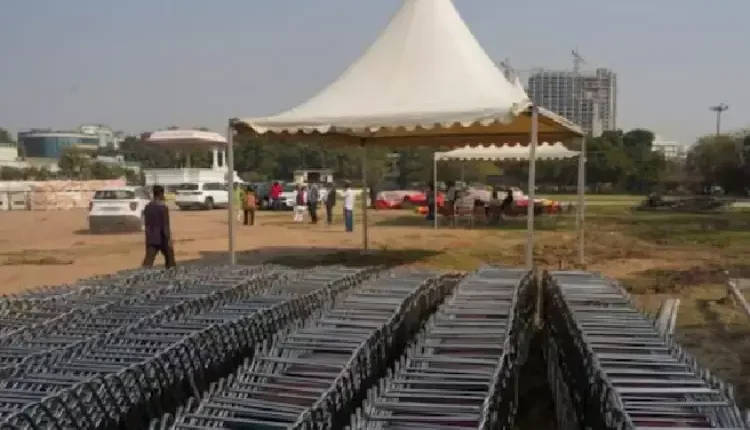New Delhi: Ramlila Maidan, a name associated with cultural, religious, and political activity, is not a ground but the pulse of India’s cities. Such names and locations have shaped our relationships for centuries, influencing golf courses from Delhi to Lucknow, Ghaziabad to Gorakhpur, and Jaipur to Sikar. They serve as historic hubs of tradition, celebration, and transformation, permeating local and online spaces like the Chandni Chowk sweets in Daryaganj. So, as the new BJP chief minister gets sworn in at Ramlila Maidan this February 20, it is a reminder of how niches continue to define our future and, at the same time, hold on to the past.
A Legacy Rooted in History
Ramlila Maidan in Delhi dates back to the last Mughal emperor, Bahadur Shah Zafar, and has always been a space for cultural and religious events. Even before its proper emergence, the local Hindu community in this place has held Ramlila presentations, an age-old tradition. The British took a liking to this site and eventually turned it into an everlasting stage for Ramlila, a part of the city it has long been and still is.
But Ramlila Maidan is by no means a historical elision. Grounds like these have come to represent communal harmony, cultural expression, and the exercise of political rights across India. Many such spaces, decades or even centuries old, are not just venues for the annual Dussehra festivities but also podiums for a world of religious, cultural, and political events that imprint their cities.
The cultural heart of many Indian cities is Lucknow’s Aishbagh Ramlila Maidan
The Aishbagh Ramlila Maidan is a prominent site in the background of historicism in Lucknow city. Nawab Wajid Ali Shah established it as a centre for arts, culture, and religious festivities in 1860. The ground where it is performed got this name because the Nawab himself used to patronize the Ramlila, which was held along with colourful fairs.
Aishbagh Ramlila Maidan morphed into a place for politics over the years. After India’s independence in 1947, the ground also saw celebrations and stirs, where leaders from both national and regional levels addressed their fellow citizens. The ground continues to hold historic significance, with Prime Minister Narendra Modi present at the Ramlila in 2016.
Gorakhpur and Ghaziabad: The Traditions Guardians
The Ramlila Maidan from Kavinagar in Ghaziabad to Andhiaribagh in Gorakhpur is essential for devout Hindus in Gujarat. This ground was established in 1900 by Ustad Sulaiman near the famous Ghantaghar, and it has been a cultural icon for over a century in the city. At the same time, with a tradition of 250 years, Uva Ramlila Maidan in Gorakhpur is famous for its pomp and the Raghava Shakti Milan.
These grounds are more than just cultural hubs; they are also political battlegrounds. They are the lifeblood of the region, and during elections, they are alive with rallies and public meetings.
Celebrating the spirit of Shekhawati in the pink City of Rajasthan—Jaipur and Sikar
In Rajasthan, cultural symbols are Jaipur, Ramlila Maidan near Newgate, and Sikar’s historic ground. The Ramlila of Sikar, which started in 1953, is known for the enormous Ravana effigy in this part of the Shekhawati region. These grounds, very similar to their counterparts in Uttar Pradesh, are seen as spaces that witness the hustle and bustle of a culturally and politically oriented city in equal measure.
An Emblem of Communal Harmony and Tradition
Ramlila Maidan is the name of an open field in many cities, but only a few have the baggage of history attached to it. These spaces, closely woven into the fabric of their cities, are more than venues; they are a living legacy. From religious to political rallies, they have grown, simultaneously growing with India and making themselves the backbone of this country.



Comments are closed.